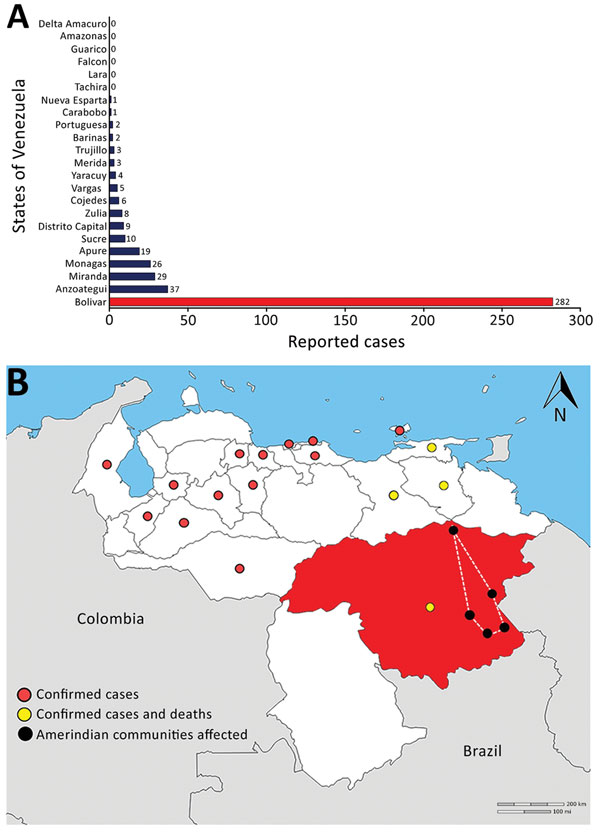Volume 24, Number 7—July 2018
Dispatch
Diphtheria Outbreak in Amerindian Communities, Wonken, Venezuela, 2016–2017
Figure 2

Figure 2. Suspected and confirmed diphtheria cases and deaths, by state, Venezuela, 2016–2017. The highest number of cases occurred in the state where Amerindians reside (Bolivar, red). A) Number of suspected cases of diphtheria reported from week 28 of 2016 through week 24 of 2017, by state. B) Location of confirmed cases and deaths, Venezuela, 2017. The affected Amerindian communities reside in the area within the dotted line. Map obtained from d-maps (http://d-maps.com/carte.php?num_car=4080&lang=es).
Page created: June 18, 2018
Page updated: June 18, 2018
Page reviewed: June 18, 2018
The conclusions, findings, and opinions expressed by authors contributing to this journal do not necessarily reflect the official position of the U.S. Department of Health and Human Services, the Public Health Service, the Centers for Disease Control and Prevention, or the authors' affiliated institutions. Use of trade names is for identification only and does not imply endorsement by any of the groups named above.